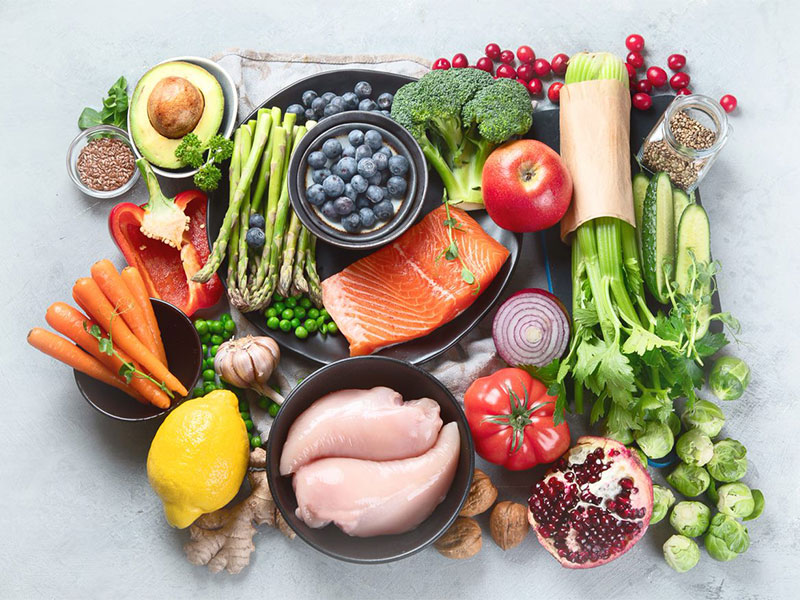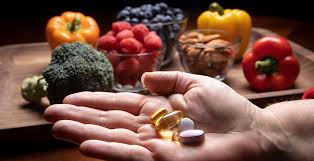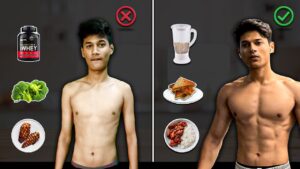Cholesterol plays a vital role in your body, but when levels become too high, it can contribute to the buildup of plaque in your arteries, leading to heart disease, stroke, and other cardiovascular issues. The good news is that you can take control of your cholesterol levels with a few simple, lifestyle-focused strategies. Here are seven effective ways to control your cholesterol and boost your heart health:
1. Eat Heart-Healthy Foods
Your diet is one of the most powerful tools for controlling cholesterol. Focus on incorporating foods that promote healthy cholesterol levels and avoid those that can cause harmful buildup in your arteries.
- Eat more fiber-rich foods: Foods high in soluble fiber, like oats, beans, lentils, fruits, and vegetables, help lower LDL (bad) cholesterol by binding to it and removing it from your body.
- Choose healthy fats: Instead of saturated fats (found in fatty meats and full-fat dairy), opt for healthier fats from sources like olive oil, avocados, and nuts. Omega-3 fatty acids, found in fatty fish like salmon, sardines, and mackerel, can also help improve heart health.
- Limit trans fats: These artificial fats, often found in processed foods like baked goods, snacks, and fried foods, raise bad cholesterol levels and lower good cholesterol.

2. Exercise Regularly
Physical activity is a key factor in lowering cholesterol and improving cardiovascular health. Exercise helps raise HDL (good) cholesterol and lowers LDL (bad) cholesterol, as well as triglycerides.
- Aim for at least 30 minutes of moderate-intensity exercise most days of the week. This could include brisk walking, cycling, swimming, or even gardening.
- Incorporate strength training: Lifting weights or doing bodyweight exercises can further enhance your cholesterol-lowering efforts.
3. Maintain a Healthy Weight
Carrying excess weight, especially around your abdomen, can increase your cholesterol levels and contribute to heart disease. Losing even a small amount of weight can have a significant positive effect on your cholesterol and overall health.
- Focus on a balanced diet and regular exercise to achieve and maintain a healthy weight.
- Studies show that losing 5-10% of your body weight can lower LDL cholesterol and improve your heart health.

4. Quit Smoking
Smoking damages your blood vessels and lowers your levels of HDL cholesterol, making it harder for your body to remove LDL cholesterol. Quitting smoking not only improves your cholesterol profile but also helps reduce your risk of heart disease and stroke.
- Seek support: If quitting smoking seems challenging, consider joining a smoking cessation program, using nicotine replacement therapy, or speaking to a healthcare professional for personalized advice.
5. Manage Stress
Chronic stress can negatively impact your cholesterol levels by raising your cortisol levels and contributing to unhealthy behaviors like poor eating habits or lack of physical activity. Managing stress through relaxation techniques and lifestyle changes can improve your heart health.
- Try deep breathing exercises, meditation, yoga, or mindfulness practices to reduce stress.
- Engaging in enjoyable hobbies, spending time with loved ones, or even taking regular breaks throughout your day can also reduce stress levels.
6. Consider Cholesterol-Lowering Supplements
In some cases, people with high cholesterol may benefit from certain supplements. While these should not replace a healthy diet and lifestyle, some may help support your efforts to lower cholesterol.
- Psyllium fiber: This soluble fiber supplement can help lower LDL cholesterol.
- Plant sterols and stanols: Found in fortified foods or supplements, these compounds block cholesterol absorption.
- Fish oil: Omega-3 supplements can lower triglyceride levels and improve overall heart health.
- Red yeast rice: This supplement has been shown to help lower cholesterol, but it should be used with caution and under medical supervision, as it contains a substance similar to statin drugs.

7. Regular Check-ups
- Monitor your cholesterol levels: Regular check-ups with your doctor can help you track your progress and make necessary adjustments.
By incorporating these simple strategies into your daily routine, you can take control of your cholesterol and significantly reduce your risk of heart disease. Remember, small changes can lead to big results.
Final Thoughts
Taking control of your cholesterol doesn’t require drastic changes or complicated treatments. By focusing on heart-healthy eating, regular exercise, weight management, stress reduction, and other lifestyle improvements, you can effectively lower your cholesterol and reduce your risk of cardiovascular disease. If you have concerns about your cholesterol levels, be sure to talk to your healthcare provider, who can help you develop a personalized plan to achieve and maintain healthy cholesterol levels.
What removes cholesterol fast?
While there’s no quick fix to drastically lower cholesterol, certain lifestyle changes and medications can significantly reduce it over time. Here are some effective approaches:
Medication: Statin drugs are highly effective in lowering LDL cholesterol.
Dietary Changes: Reduce saturated and trans fats: Found in red meat, full-fat dairy, processed foods, and fried foods.
Increase soluble fiber: Found in oats, beans, fruits, and vegetables.
Choose healthy fats: Opt for monounsaturated and polyunsaturated fats in olive oil, nuts, seeds, and fatty fish.
Limit cholesterol intake: Reduce consumption of foods high in cholesterol, like egg yolks, organ meats, and shellfish.
Exercise: Aim for 30 minutes of moderate-intensity exercise most days of the week.
Weight Management: Losing even a small amount of weight can help.
What food reduces cholesterol?
Several foods can help lower cholesterol:
Oats and other whole grains: Rich in soluble fiber, which binds to cholesterol and helps remove it from the body.
Beans and legumes: Excellent source of soluble fiber and protein.
Fruits and vegetables: Particularly apples, pears, berries, and citrus fruits.
Nuts and seeds: Almonds, walnuts, flaxseeds, and chia seeds are high in healthy fats and fiber.
Fatty fish: Salmon, mackerel, and herring are rich in omega-3 fatty acids, which can help lower triglycerides and reduce inflammation.
How to reduce cholesterol in 7 days?
While significant cholesterol reduction takes time, you can start making positive changes within a week:
1. Cut back on saturated and trans fats.
2. Increase fiber intake.
3. Start a moderate exercise routine.
4. Reduce sodium intake.
5. Consider low-cholesterol or plant-based meals.
6.Stay hydrated.
7.Manage stress
How to reduce cholesterol in 30 days?
While significant cholesterol reduction takes time, you can start making positive changes within 30 days. Here’s a practical approach:
Diet:
Prioritize heart-healthy foods: Focus on fruits, vegetables, whole grains, lean proteins, and healthy fats.
Limit saturated and trans fats: Reduce intake of red meat, processed foods, fried foods, and full-fat dairy products.
Increase soluble fiber: Incorporate oats, beans, fruits, and vegetables into your diet.
Choose healthy fats: Opt for monounsaturated and polyunsaturated fats found in olive oil, nuts, seeds, and fatty fish.
Limit cholesterol intake: Reduce consumption of foods high in cholesterol, such as egg yolks, organ meats, and shellfish.
Exercise:
Aim for 30 minutes of moderate-intensity exercise most days of the week: Activities like brisk walking, swimming, or cycling can help.
Incorporate strength training: Build muscle to boost metabolism and improve cholesterol levels.
Lifestyle Changes:
Quit smoking: Smoking significantly raises LDL cholesterol.
Limit alcohol: Excessive alcohol consumption can negatively impact cholesterol levels.
Manage stress: Practice relaxation techniques like yoga, meditation, or deep breathing.
Get enough sleep: Adequate sleep helps regulate hormones that affect cholesterol levels.
Remember:
Consult Your Doctor: Before making significant changes to your diet or exercise routine, or starting any new medication, consult your doctor.
Be Patient: Lowering cholesterol takes time. Stick to your plan and celebrate your progress.
By following these guidelines, you can make significant strides in reducing your cholesterol levels within 30 days. However, it’s important to maintain these healthy habits for long-term benefits.
Foods to avoid with high cholesterol?
Foods to avoid with high cholesterol include:
Red meat: Beef, pork, and lamb, especially fatty cuts.
Processed meats: Sausages, hot dogs, bacon, and deli meats.
Full-fat dairy products: Whole milk, butter, cream, and full-fat cheese.
Fried foods: French fries, fried chicken, doughnuts, and fried snacks.
Tropical oils: Coconut oil and palm oil.
Baked goods and sweets: Cakes, cookies, pastries, and ice cream.
Foods high in trans fats: Margarine, shortening, and some processed snacks.
It’s important to note that everyone’s dietary needs are different, so it’s best to consult with a healthcare professional or registered dietitian to create a personalized meal plan that helps manage cholesterol levels.










